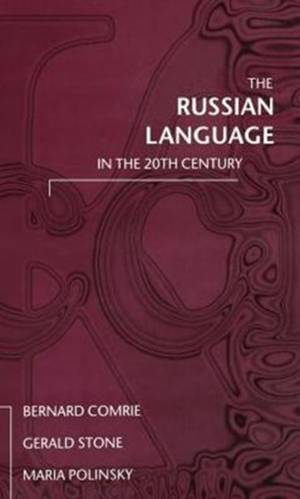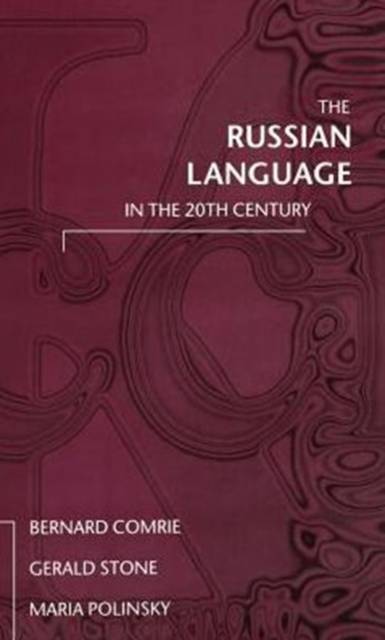
- Afhalen na 1 uur in een winkel met voorraad
- Gratis thuislevering in België vanaf € 30
- Ruim aanbod met 7 miljoen producten
- Afhalen na 1 uur in een winkel met voorraad
- Gratis thuislevering in België vanaf € 30
- Ruim aanbod met 7 miljoen producten
Zoeken
The Russian Language in the Twentieth Century
Bernard Comrie, Gerald Stone, Maria Polinsky
Hardcover | Engels
€ 386,95
+ 773 punten
Omschrijving
Comrie's and Stone's The Russian Language since the Revolution (OUP 1978) provided a comprehensive account of the way Russian changed in the period between 1917 and the 1970s. In this new volume the authors, joined by Maria Polinsky, extend the time frame back to 1900 and forward to glasnost in the mid 1980s. They first consider changes in the pronunciation, morphology, syntax, and vocabulary of the language and then examine the effects of social change on the language in chapters on the changing status of women, modes of address and speech etiquette, and orthography. They show that changes in all these areas have been very substantial, and explore the extent to which the standard language, as portrayed in dictionaries and grammars, coincides with the actual usage--both spoken and written--of educated Russians.
Specificaties
Betrokkenen
- Auteur(s):
- Uitgeverij:
Inhoud
- Aantal bladzijden:
- 396
- Taal:
- Engels
Eigenschappen
- Productcode (EAN):
- 9780198240662
- Verschijningsdatum:
- 23/05/1996
- Uitvoering:
- Hardcover
- Formaat:
- Genaaid
- Afmetingen:
- 145 mm x 224 mm
- Gewicht:
- 625 g

Alleen bij Standaard Boekhandel
+ 773 punten op je klantenkaart van Standaard Boekhandel
Beoordelingen
We publiceren alleen reviews die voldoen aan de voorwaarden voor reviews. Bekijk onze voorwaarden voor reviews.











